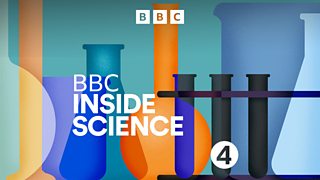Bees and pesticides; Heart gene therapy; Petal shapes
The science behind the EU pesticide ban - will it protect bees? Plus a gene therapy trial that could reverse heart muscle damage, and how petals grow. Quentin Cooper presents.
EU states have voted in favour of a proposal to restrict the use of certain pesticides that have been linked to causing serious harm in bees. Neonicotinoid chemicals in pesticides are sprayed onto seeds and spread throughout the plant as it grows. There has been a lot of concern about this systematic approach, with some scientists arguing that it is comparable to using antibiotics prophylactically. Professor Dave Goulson from the University of Sussex and Dr. Lynn Dicks from the University of Cambridge discuss the scientific evidence currently available on these pesticides as well as the limited data available on the state of pollinating insects.
Patients in the UK have begun being enrolled into trials to see if an engineered virus can be used to heal their damaged and struggling hearts. The trial will use a virus to introduce genetic material into heart muscle to reverse the organ's decline. Researchers found that levels of the protein SERCA2a were lower in heart-failure patients. So they devised a genetically modified virus, with the instructions for producing more of the protein that can infect the heart. The virus will be released into the damaged heart muscle of patients involved in two separate trials testing both the safety and effectiveness of this potential treatment. Dr Alexander Lyon, a cardiologist at one of the hospitals involved, the Royal Brompton in London, and also a Senior Lecturer in Cardiology at Imperial College London is in the studio.
Why are petals all sorts of different shapes? New research shows that petals get their shape from a hidden molecular map within their buds that tells them how to grow. Dr Susana Sauret-Gueto from the John Innes plant science Centre in Norwich explains more about her research.
Last on
More episodes
Bees and neonics

Gene Therapy

Petal Shapes

Petals get their shape from a hidden molecular map within their buds that tells them how to grow. Scientists from the John Innes Centre and University of East Anglia discovered that these concealed maps are made up of patterns of arrows that act as instructions for how each cell in the bud should grow.
听
Broadcasts
- Thu 2 May 2013 16:30麻豆社 Radio 4
- Mon 6 May 2013 21:00麻豆社 Radio 4


